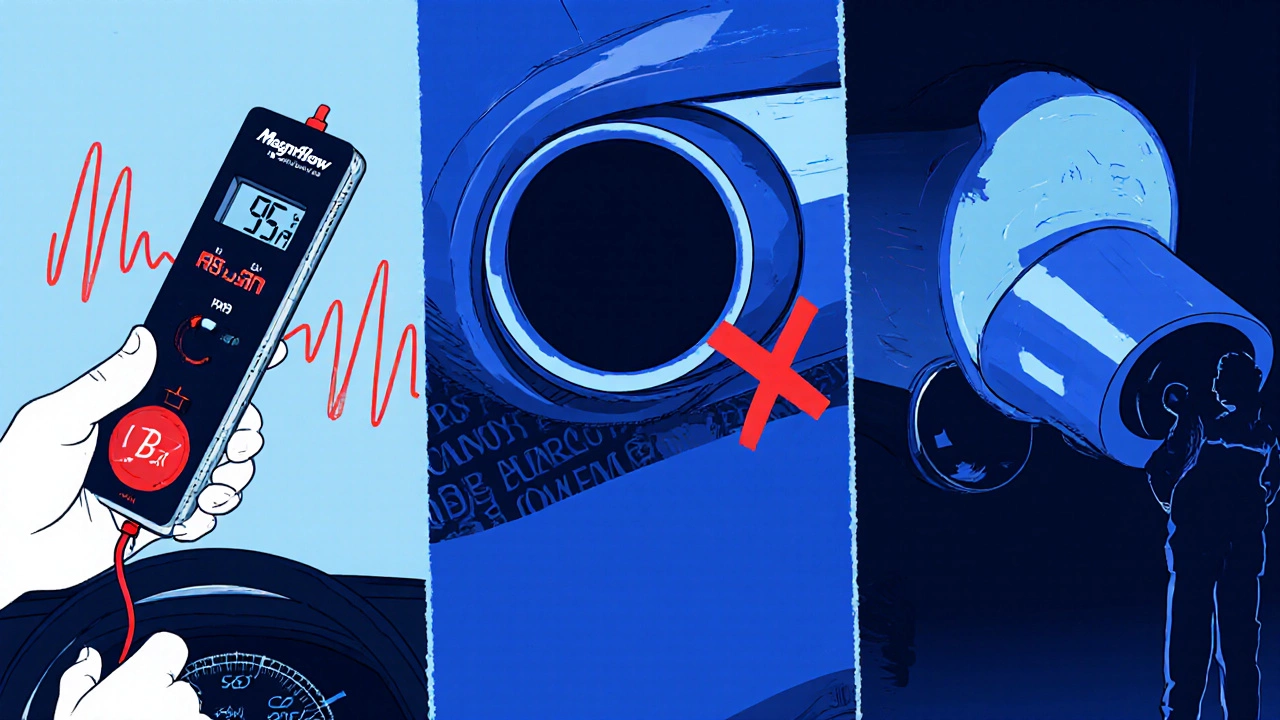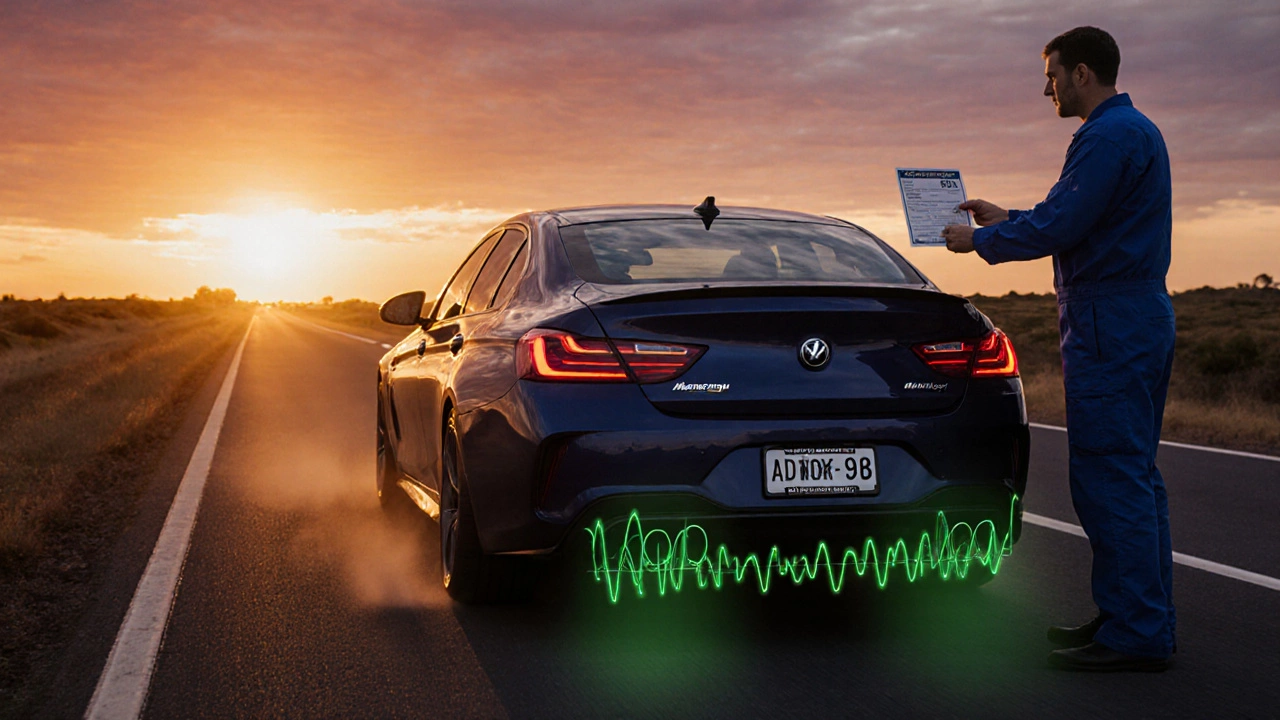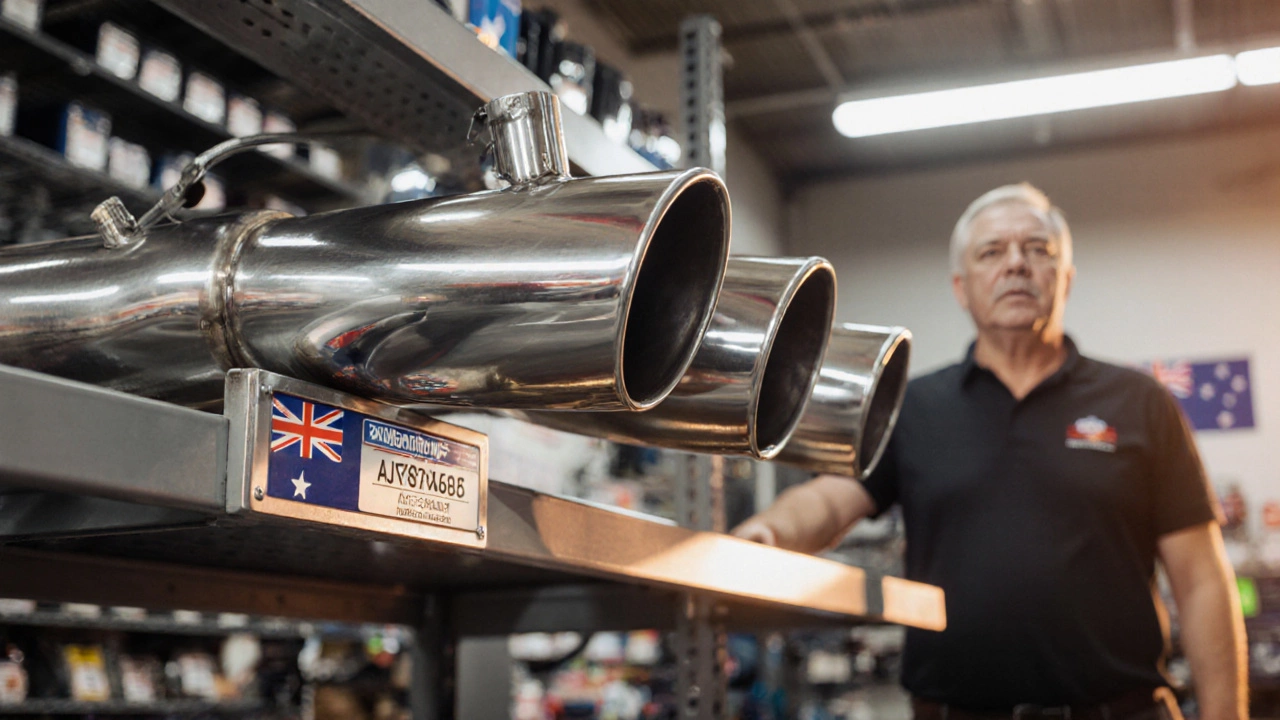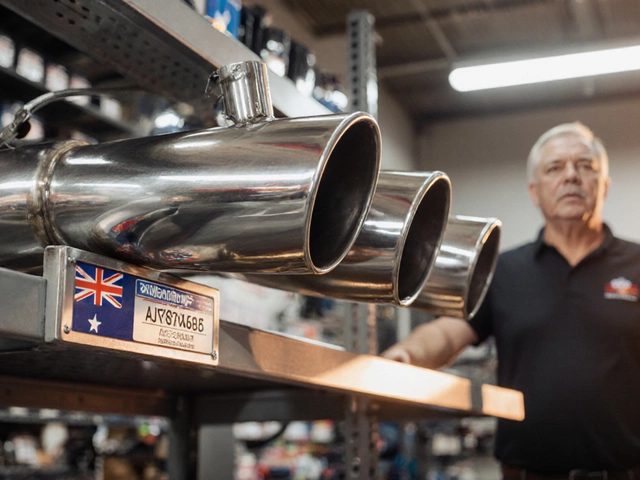Exhaust Noise Compliance Calculator
Check Your Exhaust Noise Compliance
Compliance Result
When you shop for a new muffler or pipe, the first thing you hear is the promise of louder notes and better performance. But before you bolt a MagnaFlow exhaust illegal claim into your mind, you need to know the legal landscape in Australia. This guide walks you through the rules, the common pitfalls, and how to keep your ride roaring without getting a ticket.
What the Law Says About Exhausts in Australia
Australian Design Rules (ADR) are the national standards that govern vehicle safety, emissions, and noise. They set limits on sound levels, require catalytic converters on petrol engines, and mandate that any replacement part be approved by the regulator. Each state and territory enforces ADR through its own road‑authority - for example, VicRoads oversees vehicle registration and compliance in Victoria. If a part fails to meet ADR, it’s considered illegal on public roads.
Key Factors That Make an Exhaust "Illegal"
- Noise level: ADR 30/01 limits exhaust noise to 95 dB(A) at 5.5 m for most passenger cars. Anything louder can attract a fine.
- Emissions compliance: Removing or disabling the catalytic converter breaches ADR 33/00, which mandates a specific reduction in CO, HC, and NOx.
- Certification: The component must carry an ADR compliance plate or an equivalent approval number. Uncertified aftermarket parts are viewed as non‑compliant.
- Fitment: The exhaust must match the vehicle’s make, model, and engine variant. Swapping a big‑bore pipe designed for a V8 onto a small‑engine sedan can cause illegal fitment.
MagnaFlow Exhausts - What’s the Deal?
MagnaFlow exhaust is a US‑based brand known for stainless‑steel mufflers and performance pipes, marketed worldwide for their flow‑improved designs. In Australia, the brand offers several product lines:
- Cat‑back systems (replace everything after the catalytic converter).
- Axle‑back systems (replace the muffler and tailpipe only).
- Straight‑through pipes (often sold as “racing” parts).
Many of these kits carry an ADR compliance number when sold by authorised local distributors. However, the same model can be illegal if you buy a generic version from overseas without that certification, or if you modify it - for example, by drilling extra holes for louder sound.

When a MagnaFlow Exhaust Becomes Illegal
Here are the most common scenarios that push a Magnum‑flow setup over the line:
- Missing or altered catalytic converter: If you install a cat‑back MagnaFlow kit but also remove the OEM catalytic converter, you breach ADR 33/00.
- Excessive noise: Some high‑flow MagnaFlow mufflers exceed the 95 dB limit, especially on high‑revving engines. Running a decibel meter on a public road can quickly prove non‑compliance.
- Incorrect pipe diameter: Swapping a 3‑inch pipe meant for a V8 onto a small four‑cylinder can create back‑pressure issues that trigger emissions failures during mandatory inspections.
- Unapproved aftermarket brand: If the exact MagnaFlow part you bought lacks an ADR plate or an approved import certificate, it’s technically illegal until you obtain that paperwork.
- State‑specific rules: Queensland’s Department of Transport and Main Roads requires a separate noise compliance test for any modified exhaust. Ignoring these can lead to a state‑level fine even if the part meets national ADR.
How to Keep Your MagnaFlow Exhaust Legal
Follow this checklist before you hit the road:
- Buy from an authorised Australian dealer who provides the ADR compliance plate.
- Retain the certificate of conformity (COC) - you’ll need it for registration and roadside inspections.
- Never remove the catalytic converter unless you’re registering the car as a race‑only vehicle (which must be kept off public roads).
- Measure exhaust sound with a calibrated dB meter at 5.5 m. Stay below the 95 dB threshold.
- Have the installation inspected by a licensed motor mechanic who can certify the fitment.
- If you move between states, check each state’s specific noise limits - for example, New South Wales caps at 94 dB for cars under 2000 cc.
By keeping documentation and staying within the limits, you protect yourself from costly fines and keep the car’s warranty intact.

Comparison: MagnaFlow vs. Stock vs. Other Aftermarket Brands
| Brand | Noise (dB at 5.5 m) | ADR Certified? | Typical Fitment | Best For |
|---|---|---|---|---|
| Stock OEM | 89‑92 | Yes | All models | Compliance & warranty |
| MagnaFlow Cat‑back | 93‑97 (depends on model) | Yes, if purchased locally | Performance‑oriented cars | Flow boost with modest sound |
| Flowmaster 40‑Series | 98‑102 | Often no (imported) | Muscle cars, V8s | Loud, aggressive tone |
| Borla Street Series | 94‑99 | Depends on retailer | Sedans & coupes | Balanced sound & power |
The table shows why MagnaFlow can be a safe middle ground: it often stays under the legal noise ceiling while delivering noticeable performance gains.
What Happens If You Get Caught?
If a police officer or a roadside inspector spots a non‑compliant exhaust, you’ll receive a defect notice. The typical outcomes are:
- Fine: Varies by state, usually between AUD 300‑600.
- Repair order: You’ll be required to replace the exhaust with a compliant version within a set timeframe.
- Registration suspension: In severe cases, especially if emissions are affected, the vehicle’s registration can be suspended until it passes a compliance test.
Keeping the original paperwork and proof of ADR approval can help you argue the case, but it’s always faster to swap back to a compliant part.
Final Thoughts - Stay Loud, Stay Legal
MagnaFlow exhausts offer a great mix of style and performance, but they’re only legal when they respect Australia’s noise and emissions rules. Buy from approved distributors, retain your certification, and double‑check your local state limits. That way you’ll enjoy the sound you love without the hassle of tickets.
Can I use a MagnaFlow exhaust on a car that’s still under warranty?
Yes, as long as the kit is ADR‑certified and you keep the original catalytic converter. Installing a non‑certified pipe or removing emissions control can void the warranty.
Do I need to register the exhaust change with VicRoads?
Only if you alter the vehicle’s emissions system or install a pipe that lacks an ADR plate. In that case, you must submit a Vehicle Identification Number (VIN) check and the compliance certificate.
What’s the legal noise limit for a V8 in Queensland?
Queensland caps exhaust noise at 96 dB measured 5.5 m from the vehicle, slightly higher than the national 95 dB limit.
If I buy a MagnaFlow exhaust online from the US, is it automatically illegal?
Not automatically, but you’ll need an ADR compliance plate or an import approval. Without that paperwork, the part is considered non‑compliant for road use.
How can I test my exhaust’s dB level at home?
Use a handheld sound level meter, stand 5.5 m away, and rev the engine to the range you normally drive. Compare the reading to the 95 dB threshold.


